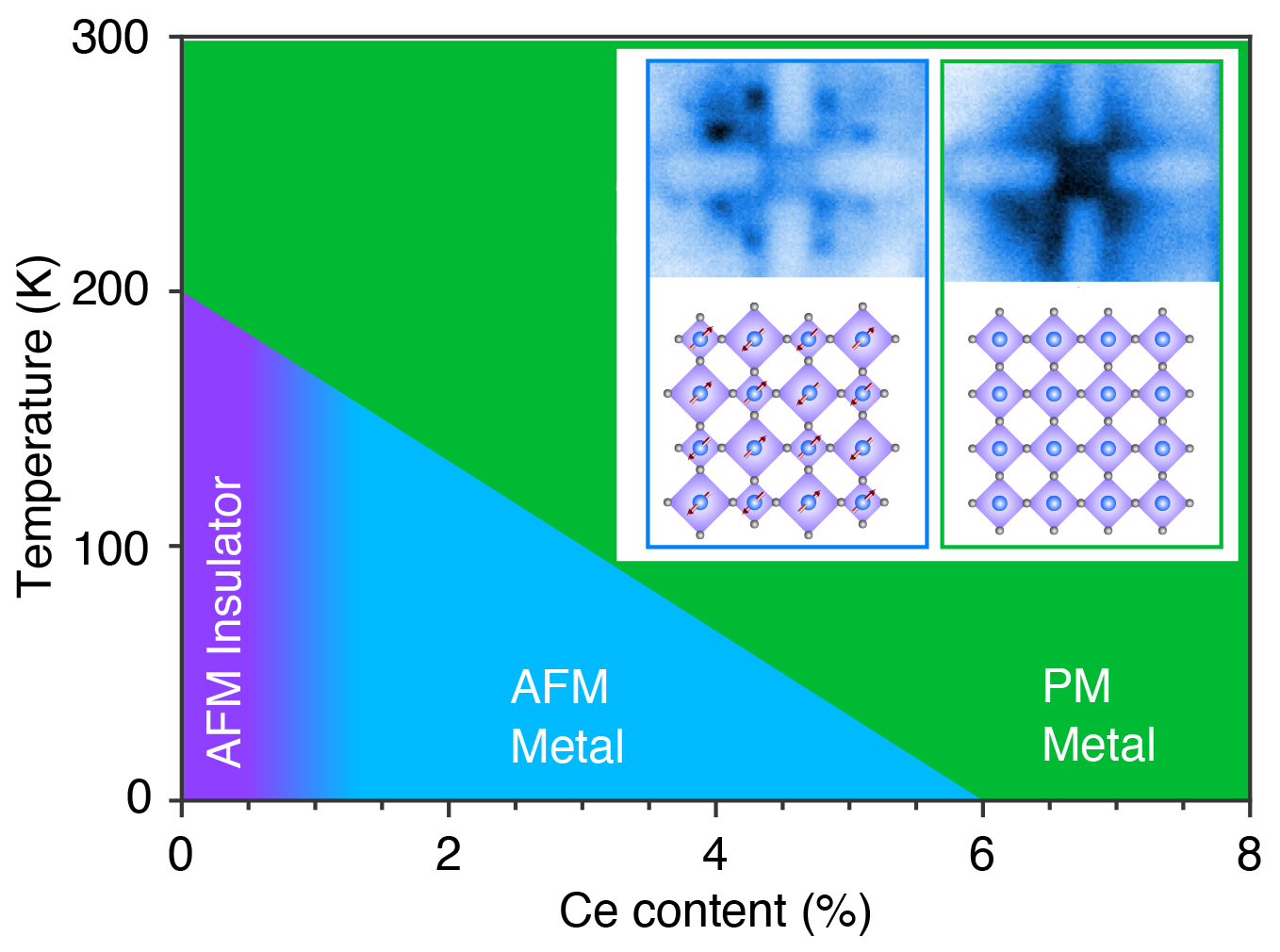Rare-earth nickelates are known to undergo a metal-to-insulator phase transition as temperature decreases. However, the mechanism of this transition is not well understood. In a recent study, researchers showed that when the rare-earth nickelate material, neodymium nickelate (NdNiO3), is doped with small amounts of cerium (Ce), an entirely new low-temperature phase appears that’s both metallic and antiferromagnetic—an unusual combination with potential value in spintronics.
“Metal-insulator transitions are among the most sought-after effects in condensed matter,” said Luca Moreschini, a research associate at UC Berkeley and one of the study’s co-authors. “If you can switch from one to the other on demand, there are a number of ways you can think of to make use of that. And if it happens together with the onset of magnetic order, then there is one more variable to play with, one more knob to turn.”
At the Advanced Light Source, the researchers used multiple techniques to probe the electronic and magnetic properties of the new phase. Angle-resolved photoemission spectroscopy at Beamline 7.0.2 mapped the electronic structure, x-ray absorption spectroscopy at Beamlines 4.0.2 and 6.3.1 measured Nd and Ce valence states, and resonant x-ray scattering, again at Beamline 4.0.2, probed magnetic order. In addition, a number of measurements were also done at other facilities to characterize the films.
The results uncovered some interesting physics underlying the transition. The electronic-structure data revealed that the material’s Fermi surface is very much reduced at the transition, but it does not vanish. In other words, there are fewer charge carriers, but the system remains a metal. In terms of the magnetic order, the new antiferromagnetic metal phase exhibits an unusually large change in resistivity when under the influence of an external magnetic field. Furthermore, this change in resistivity remains after the removal of the external field, demonstrating a true memory effect.
The results expand the already rich phase diagram of rare-earth nickelates and, with the level of control attainable today in material synthesis, it’s very plausible that the richness will be further amplified in coming years, with potential to advance the development of new functionalities in this family of perovskite oxides.

Q. Song, S. Doyle, G.A. Pan, I. El Baggari, D.F. Segedin, D. Córdova Carrizales, J. Nordlander, C. Tzschaschel, J.R. Ehrets, Z. Hasan, H. El-Sherif, J. Krishna, C. Hanson, H. LaBollita, A. Bostwick, C. Jozwiak, E. Rotenberg, S.-Y. Xu, A. Lanzara, A.T. N’Diaye, C.A. Heikes, Y. Liu, H. Paik, C.M. Brooks, B. Pamuk, J.T. Heron, P. Shafer, W.D. Ratcliff, A.S. Botana, L. Moreschini, and J.A. Mundy, “Antiferromagnetic metal phase in an electron-doped rare-earth nickelate,” Nat. Phys. (2023), doi:10.1038/s41567-022-01907-2.